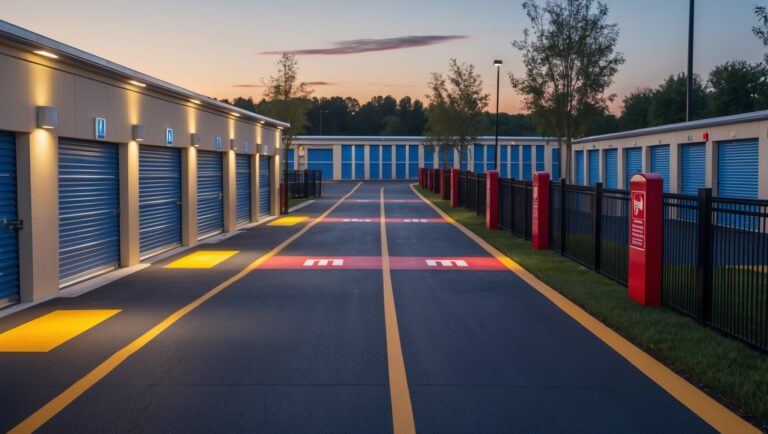How to Launch a Mobile Storage Business: A Step-by-Step Startup Playbook
Introduction: Why Mobile Storage Is Booming—and How to Get Started
The mobile storage industry has evolved rapidly over the past decade, offering a flexible solution for both residential and commercial customers who need temporary or long-term storage without the hassle of hauling their belongings to a fixed facility. From homeowners in the midst of renovations to businesses managing inventory overflow, mobile storage units—delivered directly to the client—have transformed the moving and storage marketplace.
If you’re considering launching a mobile storage business, you’re eyeing a sector with strong growth potential, but also unique logistical and operational challenges. Unlike traditional self-storage, mobile storage requires expertise in transportation, scheduling, container maintenance, and on-site customer service. Success depends on careful planning, smart investment, and a deep understanding of your target market.
This comprehensive guide will walk you through each critical step, from early market research and legal compliance to fleet management, container selection, pricing models, and customer experience optimization. Whether you’re an industry newcomer or an established operator expanding into mobile services, this playbook is designed to help you launch with confidence and sustainability.
Step 1: Research Your Market and Define Your Niche
Assess the Local Demand
Begin by analyzing your region for mobile storage demand. Look at:
- Population demographics: Urban areas, university towns, and growing suburbs often need mobile storage for residential moves, student storage, or business transitions.
- Business density: Commercial clients—such as contractors, retailers, and event planners—frequently require on-site storage.
- Competitor landscape: Identify existing mobile storage providers. Analyze their pricing, service areas, container types, and customer reviews to uncover gaps or opportunities.
- Seasonality: Demand often spikes during spring and summer. Plan inventory and marketing accordingly.
Identify Your Unique Selling Proposition (USP)
Consider how you’ll differentiate your service. Possible USPs include:
- Faster delivery and pickup windows
- Specialized containers (climate controlled, extra-large, secure, etc.)
- Flexible rental terms
- Value-added services (packing, loading assistance, insurance options)
Survey potential customers to validate your ideas and estimate pricing tolerance.
Step 2: Handle Legal, Regulatory, and Insurance Requirements
Business Structure and Registration
Choose and register a business structure (LLC, corporation, or sole proprietorship). Consult with a business attorney to ensure compliance with local, state, and federal regulations.
Permits and Zoning
Mobile storage units may be subject to local zoning laws and permit requirements. Check:
- Where containers may be dropped (private property, public roads, commercial lots)
- Duration limits for on-site storage
- Permit requirements for both storage and transport vehicles
Maintain meticulous records and stay updated as regulations can shift with municipal priorities.
Insurance Essentials
- General liability insurance: Protects against property damage or bodily injury claims.
- Commercial auto insurance: Covers trucks and drivers delivering the units.
- Container insurance: Insure your containers against theft, vandalism, and weather-related losses.
- Customer goods insurance: Offer or require customers to purchase coverage for stored contents.
Step 3: Plan Your Fleet and Container Inventory
Choosing Containers
Investing in the right containers is crucial. Consider:
- Size options: Common sizes are 8x8x12, 8x8x16, and 8x8x20 feet. Offering a range attracts diverse clients.
- Material: Steel is durable and secure, but composite materials may be lighter and easier to transport.
- Features: Look for weatherproofing, secure locking mechanisms, and easy-access doors.
- Branding: Uniform, professionally painted containers with your logo build trust (but avoid text/logos on marketing images).
Fleet Considerations
Your delivery fleet is the backbone of your operation. Plan for:
- Truck types: Roll-off flatbeds and tilt-bed trucks are ideal for container delivery and retrieval.
- Lift systems: Automated lift or hydraulic systems ensure safer, more efficient loading and unloading.
- Maintenance schedule: Regular inspections and servicing prevent costly breakdowns and delays.
- GPS tracking: Provides real-time vehicle location and route optimization.
Step 4: Secure a Storage Yard or Facility
Location Matters
When containers aren’t on customer sites, they’ll need secure, accessible storage. Choose a yard or facility that offers:
- Easy access for trucks and trailers
- 24/7 security (cameras, fencing, lighting)
- Space for future growth and container maintenance
Consider proximity to major highways and your target customer base to minimize transport times and fuel costs.
Step 5: Develop Your Pricing and Rental Model
Core Pricing Structures
- Monthly rental fees: The industry standard, often with discounts for longer-term contracts.
- Delivery and pickup charges: Set a base fee, with incremental rates for longer distances.
- On-site vs. off-site storage: Add a premium if clients keep containers at your facility rather than their own location.
- Additional services: Packing, loading, or insurance can be offered as upsells.
Research local competitors and calculate your cost structure (container depreciation, truck maintenance, labor, insurance) to set profitable, competitive rates.
Transparent Billing
Clear contracts and upfront fee disclosures build trust and reduce disputes. Equip your website with a calculator or quote request form for convenience.
Step 6: Build a Seamless Booking and Scheduling System
Online Reservations
Today’s customers expect digital convenience. Invest in software that allows:
- Real-time container availability
- Online reservations and payment processing
- Automated confirmation emails and reminders
Integrate with your inventory and dispatch management for accurate scheduling.
Efficient Dispatch and Routing
- Adopt routing tools to minimize travel time and fuel consumption.
- Build slack into schedules for traffic or unforeseen delays.
- Provide drivers with mobile apps for navigation and job updates.
Step 7: Prioritize Customer Service and Safety
Professional Delivery Experience
- Uniformed drivers and clean vehicles/containers project reliability.
- Train staff to handle containers carefully to avoid property damage.
- Provide clear instructions for container placement and access.
Safety Protocols
- Ensure containers are placed on stable, level surfaces.
- Use wheel chocks and locks to prevent accidental movement.
- Check for overhead wires, tree limbs, or obstacles before delivery.
Step 8: Market Your Mobile Storage Business
Targeted Digital Presence
- SEO and local listings: Optimize your website for search terms like “mobile storage near me,” and claim your Google Business Profile.
- Social media: Share before/after photos, customer stories, and moving tips.
- Paid ads: Test Google Ads and social media campaigns targeting local movers, realtors, and businesses.
Partnerships and Referrals
- Build relationships with moving companies, realtors, contractors, and event planners for mutual referrals.
- Offer referral incentives or discounts for repeat business.
Community Engagement
- Participate in local fairs, home shows, or small business expos to build brand recognition.
- Consider sponsoring community events or offering temporary storage for charity drives.
Step 9: Maintain and Grow Your Operation
Operational Best Practices
- Regularly inspect and clean containers between rentals.
- Log repairs, customer feedback, and incident reports to identify trends.
- Monitor inventory utilization to guide expansion decisions.
Expand Thoughtfully
- Test new markets or service areas with pilot programs.
- Introduce specialty containers (e.g., climate-controlled, document storage) based on customer demand.
- Evaluate technology upgrades—such as customer portals or automated inventory tracking—to streamline growth.
Conclusion: Setting the Foundation for Long-Term Success
Launching a mobile storage business isn’t just about having the right trucks and containers—it’s about creating a seamless service that meets real customer needs with reliability, transparency, and professionalism. From your first market analysis to your 100th container delivery, every step outlined in this guide is designed to help you minimize risk, maximize efficiency, and build a reputation that drives repeat business and referrals.
The mobile storage space rewards operators who blend logistical savvy with customer-centric thinking. Stay ahead by keeping up with industry trends, investing in staff training, and regularly refreshing your service offerings. As you grow, don’t lose sight of the operational fundamentals: safe handling, clear communication, and meticulous maintenance. These are what turn a startup into a trusted, go-to partner for storage and moving solutions.
With careful planning, the right technology, and a commitment to service, you’re well-equipped to carve out a thriving spot in the booming mobile storage market. Remember: success is built one satisfied customer at a time.






